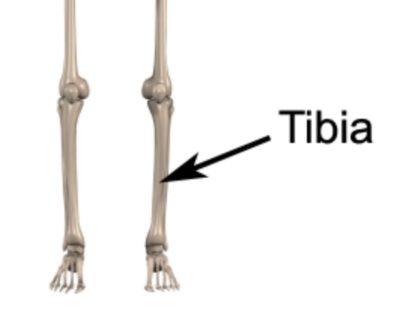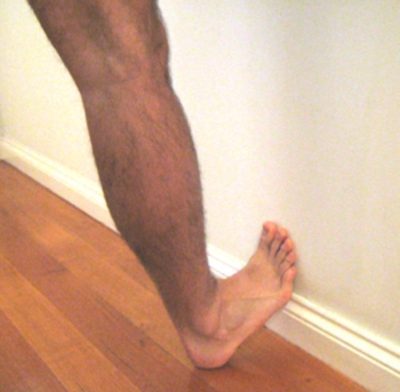Running Injuries
Updated:
Most running injuries occur in the lower limbs. These injuries are typically due to overuse, presenting gradually overtime and can affect either one or both lower limbs.

Most Common Running Injuries
Knee
ITB Friction Syndrome
A common overuse running injury which presents as pain located at the outer aspect of the knee that typically increases when firmly touching the femoral epicondyle (figure 1). Symptoms may also include pain whilst running which warms up, only to feel worse again afterwards, pain with going down stairs or bending the knee back and forth.


Members Only ContentBecome a PhysioAdvisor Member to gain full access to this exclusive content. For more details see Become a Member. Already a member? Login Now
Lower Leg
Shin Splints
Damage and inflammation of the connective tissue joining muscles to the inner shin bone (tibia). Typically associated with pain along the lower third and front / inner border of the shin bone (Tibia – figure 6) that increases when firmly touching the affected region. Symptoms may warm up (ease) with activity, but then be worse with rest following the activity (such as the next morning).

Figure 6 – Tibia Anatomy

Members Only ContentBecome a PhysioAdvisor Member to gain full access to this exclusive content. For more details see Become a Member. Already a member? Login Now
Foot & Ankle
Plantar Fasciitis
Inflammation of the connective tissue under the foot (plantar fascia) usually where it attaches to the heel bone (figure 7). Associated with pain in the under surface of the heel which may radiate into the arch of the foot, often with pain and stiffness first thing in the morning. Pain may be worse at the start of a run, then warm up, only to return again upon cooling down. Pain may also increase when firmly touching the affected region of the plantar fascia and sometimes on performing a plantar fascia stretch (figure 8).

Figure 7 – Relevant Anatomy for Plantar Fasciitis

Figure 8 – Plantar Fascia Stretch (right foot)

Members Only ContentBecome a PhysioAdvisor Member to gain full access to this exclusive content. For more details see Become a Member. Already a member? Login Now
 Contributing Factors to Running Injuries
Contributing Factors to Running Injuries
A number of factors may contribute to the development of running injuries, including:
- Poor foot posture (excessive pronation or supination)
- Excessive training
- Poor running technique
- Inappropriate footwear

Members Only ContentBecome a PhysioAdvisor Member to gain full access to this exclusive content. For more details see Become a Member. Already a member? Login Now
 Injury Prevention Tips for Runners
Injury Prevention Tips for Runners
Footwear
Ensure your footwear is appropriate for your particular foot type (see Choosing a Shoe) and that they are in good condition and ‘up-to-date’. Shoes should generally be replaced after 600 – 1000km as they tend to lose their shock absorbing capacity after this point, therefore increasing the likelihood of running injuries. Alternatively, if your mid-sole begins to show through or demonstrates horizontal lines, it’s also time to replace them. Seeing a podiatrist for specific footwear and orthotic advice is also worthwhile, particularly if you are doing a lot of running or training for an event, such as a marathon.
Running Technique
Two common technique errors seen in distance runners is overstriding and toe running. These errors increase the impact during the landing phase and are overall inefficient. If your lower leg extends beyond your body as your foot lands, your stride is too long. If this is the case, focus on taking slightly smaller steps, with your feet landing directly below your centre of mass rather than out in front of you. Aim to land on the outer aspect of your foot between the front of your heel and mid foot with your weight gradually transferring to your inner forefoot and big toe just before your foot leaves the ground. Focus on light, quiet steps, minimising the impact with the ground (your feet should not slap loudly as they hit the ground). Ensure your spine is in good posture with your eyes looking straight ahead towards the horizon and not down at your feet. Minimise any slouching in the upper back (thoracic spine) and relax your shoulders (upper traps). Your elbows should be bent to approximately 90 degrees and your hands should be in held a relaxed fist. Your arms should primarily swing forwards and backwards (not across your body) and there should be a slight forward lean in your body taking place at the ankles and not the lower back or hips. Activate the key core muscles, such as the gluteals and transversus abdominis, to ensure stability and efficiency in your running technique. Focus on symmetry of both the upper and lower limbs.
Core Stability
Many lower limb overuse running injuries can be attributed to poor strength or activation of the core stabilisers, such as the gluteals, transverses abdominis, pelvic floor, and quadriceps. As part of your training, ensure you spend enough time working on improving your core stability and proprioception (see Core Stability Exercises, Pilates Exercises, Balance Exercises).

Members Only ContentBecome a PhysioAdvisor Member to gain full access to this exclusive content. For more details see Become a Member. Already a member? Login Now
 Physiotherapy Products for Running Injuries
Physiotherapy Products for Running Injuries
The following physiotherapy products are commonly prescribed to patients by physiotherapists to assist in the rehabilitation and prevention of running related injuries:
To purchase physiotherapy products to assist in the rehabilitation and prevention of running related injuries, click on one of the above links or visit the PhysioAdvisor Shop.

Link to this Page
If you would like to link to this article on your website, simply copy the code below and add it to your page:
<a href="https://physioadvisor.com.au/injury-diagnosis/sports-injuries/running-injuries”>Running Injuries – PhysioAdvisor.com</a><br/>PhysioAdvisor provides detailed physiotherapy information on running injuries including most common running injuries, contributing factors and injury prevention tips.
Return to the top of Running Injuries.








